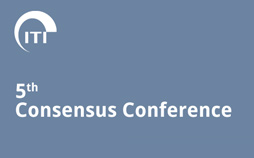
Esthetic Outcomes following Immediate and Early Implant Placement in the Anterior Maxilla
Consensus Statements
The included studies reported on single-tooth implants in postextraction sites adjacent to natural teeth. For postextraction implant placement, esthetic outcomes determined by objective indices and positional changes of the peri-implant mucosa can be achieved in the majority of cases. However, adverse esthetic outcomes may occur.
Regarding the position of the soft tissues following immediate implant (type 1) placement, there is considerable variability. Following immediate implant placement, midfacial mucosal recession of 1 mm or more occurs in 9% to 41% (median, 26%) of sites between 1 and 3 years after implant placement.
The factors associated with midfacial recession for immediate implant placement are
- thin facial bone plate
- lack of intact facial bone plate
- facial malposition of the implant, and
- thin soft tissue biotype.
Following immediate implant placement, the lack of a facial bone wall associated with increased mucosal recession is a frequent observation, based on two retrospective studies with small sample sizes.
Based on a small number of studies (one RCT and one case series), early implant placement (type 2 or 3) demonstrates no midfacial mucosal recession of 1 mm or more. Two studies of early implant placement (type 2) combined with simultaneous bone augmentation with guided bone regeneration (GBR) (contour augmentation) demonstrate a high frequency (above 90%) of a facial bone wall visible on cone beam computed tomography.
Treatment Guidelines
Esthetic outcomes can be achieved at postextraction sites irrespective of the timing of implant placement. Different placement times, however, present with specific treatment challenges and variable predictability of esthetic outcomes.
With immediate placement, a high level of clinical competence and experience in performing the treatment is needed. Careful case selection is required to achieve satisfactory esthetic outcomes. The following clinical conditions should be satisfied:
- Intact socket walls
- Facial bone wall at least 1 mm in thickness
- Thick soft tissue
- No acute infection at the site
- Availability of bone apical and palatal to the socket to provide primary stability
For immediate placement, a preoperative three-dimensional (3D) radiographic examination may be considered in determining the above-mentioned bony anatomical conditions and to assist in treatment planning.
For predictable esthetic outcomes with immediate placement with or without flap elevation, the following treatment requirements should be met:
- Correct 3D position of the implant platform (according to previous ITI recommendations).
- If that position falls within the extraction socket, a minimum distance of 2 mm between the implant platform and the inner surface of the facial socket wall should be present. A technique should be used to compensate for postextraction resorption, such as bone filler with a low substitution rate.
If these conditions are not met, immediate implant placement is not recommended.
The above-mentioned preconditions for immediate placement are rarely present. Thus, early implant placement (type 2) is the option of choice in most instances. If, however, it is anticipated that primary stability cannot be achieved, the postextraction healing period should be extended. Ridge preservation/ augmentation procedures may be considered when implant placement needs to be delayed for patient- or site-related reasons.
To optimize the esthetic outcomes of early implant placement (type 2 and 3), the implant platform should be placed in the correct restoration-driven 3D position. Implant placement is combined with GBR using a low-substitution bone filler to overcontour the facial aspect of the ridge. This is followed by coverage of the augmentation material with a barrier membrane and submergence of the biomaterials.
Downloads and References
Related items
Share this page
Download the QR code with a link to this page and use it in your presentations or share it on social media.
Download QR code
